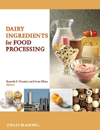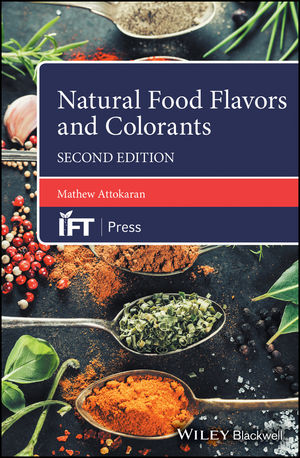Consumers, thanks to increased interest in health and wellness benefits in their foods, are reading the labels of potential food purchases more than ever before. Among the ingredients shoppers are keenly interested in are prebiotic fibers.
BENEO recently collaborated with market insights firm FMGC Gurus to survey consumers on what they know about, want from, and understand about prebiotic fibers in their bakery products. Snack Food & Wholesale Bakery checked in with three experts to dig deeper into the survey, and what it reveals about consumer behaviors and attitudes:
- Kyle Krause, North American regional product manager for functional carbohydrates and fiber, BENEO
- Myriam Snaet, head of market intelligence and consumer insights, BENEO
- Michael Hughes, head of research and insight, FMCG Gurus
Jenni Spinner: What is the current demand for fiber in baked goods?
Kyle Krause: We see that consumers want better-for-you options, even in product categories that are primarily associated with indulgence. For example, 70 % of US consumers want to see more healthy biscuits for children.
The good thing is that our chicory root prebiotic fiber (Inulin and oligofructose) is very easy to incorporate into a broad range of bakery products, enabling to enrich also staple foods that are not necessarily considered healthy (such as white bread, cakes, and cookies) with valuable prebiotic fibers. Additionally, they make it possible to reduce the sugar content in various formulations by maintaining an appealing texture and taste profile.
JS: Are consumers aware of the difference between various types of fiber?
Myriam Snaet: A focus on thoughtful food and beverage choices to control their digestive health and overall wellbeing has encouraged more and more consumers to investigate which ingredients may be most beneficial to their diets, particularly prebiotic fiber. A new global survey commissioned with 10,000 consumers in 10 countries by FMCG Gurus, a close strategic partner of BENEO, indicates that consumers are becoming familiar with prebiotics in general as well as with particular prebiotic ingredients. The survey demonstrates that more than half of respondents (54%) are aware of prebiotics and nearly one in three of those consumers know ‘chicory root fiber’ and ‘inulin’ are prebiotics, making them the most recognized prebiotic ingredients.
JS: What health benefits are consumers seeking when they try to increase their fiber intake?
MS: The FMCG Gurus survey demonstrates that consumers are shifting towards a ‘disease prevention’ rather than a ‘disease cure’ mindset. In fact, almost half (48%) of those buying food and drinks containing prebiotics were not suffering from any symptoms when they first started using them. Clearly, a health-supporting diet is high on the agenda for more and more consumers. In line with this trend, interest in food and drinks that are known to boost health increased significantly in the overall global population, from 26% in 2019 to 42% in 2021.
Moreover, two-thirds of overall respondents now see immune health as the key area for them to address in the coming year and, when it comes to promoting it, three out of four (74%) understand the importance that digestive health plays for a strong immune defense.
JS: What do consumers look for on the label when they choose a prebiotic fiber?
MS: One objective of the FMCG Gurus study was to learn more about the expectations of respondents who already buy prebiotics. The research shows that consumers want products that deliver what they promise and are backed up by science. For three out of four of these consumers, the most important factors when choosing a food containing prebiotics are product efficacy, health claims, and science-based claims.
Interestingly, despite the cost-of-living crisis, the price aspect lags behind these considerations with 55% stating that price is an important purchase factor. Having a closer look at which specific health claims are in demand, ‘digestive health’ and ‘improved general wellbeing’ (73% each) are among the most relevant for those buying food and drinks containing prebiotics.
KK: In addition to proven health benefits, customers are looking for clean-label ingredients. BENEO’s inulin and oligofructose are natural and non-GMO, obtained from chicory root via a gentle hot water extraction. This harvesting from nature clearly distinguishes them from certain other fibers, which are made indigestible by chemical and enzymatic modifications. Inulin and oligofructose are also clinically proven prebiotics, internationally accepted by scientific experts, and based on more than two decades of research.
Reliable claims, backed by science, are top of consumers’ wish lists, which reinforces the approach BENEO has taken over the past 20 years in supporting scientific prebiotic research for its ingredients. As a result, BENEO is well-placed to meet the growing consumer demand for provable prebiotics. Also, thanks to BENEO’s multi-million-dollar investment program over recent years, the company can comfortably meet increasing demand.
JS: What are some common snack foods and bakery products that can be formulated to increase fiber?
KK: BENEO’s chicory root fibers offer attractive solutions to turn baked goods such as cereal and nutritional bars, muffins, bread, biscuits, cookies, salty snacks, and even bagels into healthier snacks. Next to adding a valuable fiber source to support digestive health, prebiotic chicory root fibers can help manufacturers improve a product’s nutritional profile by reducing sugar, fat, and calories while also improving taste and texture. Additionally, both inulin and oligofructose support a balanced blood sugar level.
The efficacy of prebiotics such as chicory root inulin and oligofructose in maintaining a healthy digestive system has been confirmed in various scientific studies worldwide. Chicory root is one of the few prebiotic fibers recognized by the International Scientific Association for Probiotics and Prebiotics (ISAPP) and is officially on the list of approved dietary fibers published by the FDA.
JS. How can food manufacturers impart the efficacy of fiber to the consumer?
Michael Hughes: The results of the survey show that to attract customers, the focus for manufacturers should be on delivering value for money. Using ingredients that allow for on-pack claims is important and it enables manufacturers to be successful with premium-positioned products, even in these tough financial times.










